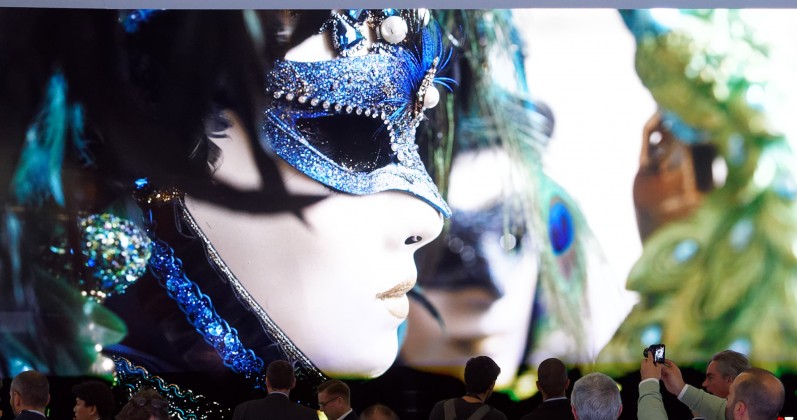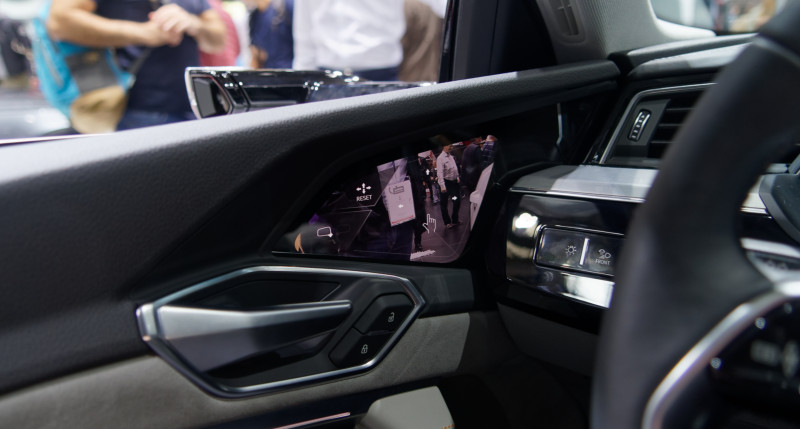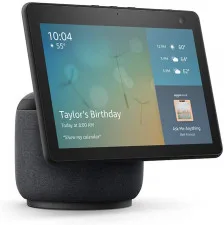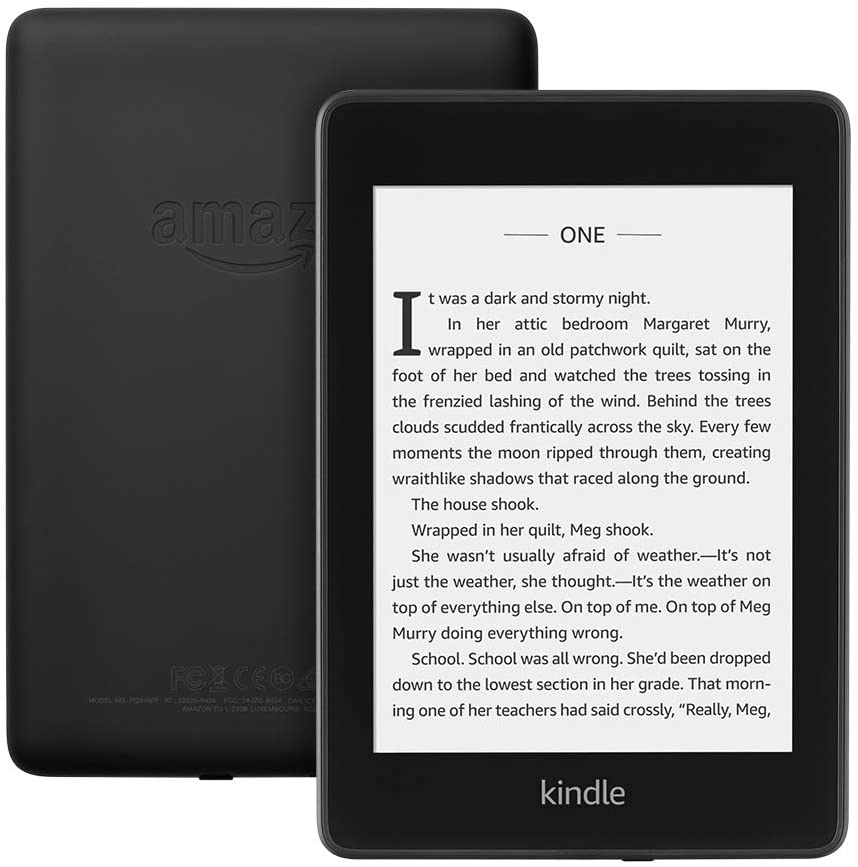Big, order-of-magnitude changes are going to continue to come to display tech during 2021. Devices will be smaller, smarter, and more nimble. From phones to cars to AI, display technology will change the way we work, live, and play.

Unfolding the Future of Phones
They say necessity is the mother of invention. And it seemed more than necessary for phone screens to grow larger while still allowing them to be carried in one’s pocket or purse. After all, more people than ever are watching movies on everything from Netflix to Hulu. They’re binge-watching the hottest new TV serials and spending more time on social media with larger and larger photos and videos attached.
Launched by Samsung, Royole, Motorola, and others, the new breed of flexphones feature flexible substrates, unique materials, and ultra-thin displays that can be folded multiple times without creasing. Pretty much all of these new foldables feature OLED displays. The next generation of displays are being enabled by new TADF materials from companies including Kyulux, Cynora and Noctiluca and sticker electronics that will keep OLED technology at the forefront.
Samsung’s Galaxy Z Fold 2, for example, features a pliable 7.6″ AMOLED inner display that adds a new dimension to reading ebooks, gameplay, and bingeing on Game Of Thrones. The good news: Foldable phones will become thinner, feature a longer battery life, and allow a growing number of mobile apps to exploit different display sizes. The bad news (at least for now): some flexphones will set you back more than a 75-inch TV!
AR/VR Go Micro for a Macro Experience
While AR seems to be awaiting a major launch from Apple or Google, there is a lot of excitement in VR. And the lion’s share of that is being spearheaded by microDisplays, in particular microOLEDs. The vast majority of VR devices use your phone, which is poor experience and those that adopted LCD technology complain of nausea. OLED technology will solve these issues but they aren’t as bright as the industry desires. But new developments from companies like eMagin Corp, involving direct patterning OLED displays will change all of this and bring 10X brightness to MicroOLED displays.
Facebook recently partnered with film studios including Disney to generate content for VR formats. So you may soon be able to immerse yourself into an action movie as a participating character—like Tom Cruise hanging on to the door of a soaring jet in Mission Impossible. Equally exciting is the Oculus partnership with the NBA, which would give you front-row seats at a finals game or, in the future, turn you into a player dribbling the ball to score a three-pointer. Still another application would allow car buyers to don a headset and take, say, their new Tesla for a spin on a high-speed driving run. The possibilities stagger the mind. The quality of displays demanded by these applications will test the engineers and scientists in our industry.
Promising Signs
The big news in signage will be led by microLED technology made popular by Sony and Samsung. Leveraged into signs, we can expect signs to offer significantly enhanced viewing with higher resolutions, higher contrast, brilliant color, and faster speeds. X Display’s technology, which is based on elastomer stamp transfer printing and microIC backplanes is taking this technology from years of research to mass production. MicroLED displays employ crystalline gallium nitride (GaN) and indium gallium aluminum phosphide (InGaAlP) semiconductors, which offer brightness and efficiency levels far beyond LCDs.
Unlike traditional displays, microLEDs aren’t handicapped by screen burn-in. So it’s no surprise that MicroLEDs will successfully compete with LCDs and OLEDs for both indoor and outdoor signage. This includes signs inside shopping malls and retail outlets, as well as other areas not previously targeted by LED technology. In terms of low-power indoor signage, ePaper offers many advantages, delivering images that are extraordinary in high ambient conditions, consuming a fraction of the power, while not distracting in an indoor setting.
 Sony’s Crystal LED Stunned viewers at ISE 2019. Image:Meko
Sony’s Crystal LED Stunned viewers at ISE 2019. Image:Meko
Automated Kiosks for a Safer World
The restrictions and emotional reactions to the Covid-19 pandemic have created a tendency for users to work with machines rather than people. This has given rise to the popularity of automation kiosks, which minimize human contact and feature antibacterial touchscreens.
Medical-grade anti-microbial materials, such as silver ions can inhibit the cell division and replication of pathogens. The use of silver nanoparticles has been certified for use in surgical masks, food containers, water filters, bandages, and biomedical devices.
Gesture and voice-activated kiosks will increasingly be used to provide directions, medical information, people counting, and temperature monitoring functions. Users can speak or gesture to a display to activate a choice or task. Voice-enabled digital assistants have already been integrated into a vast array of displays and devices, from Amazon Alexa and Google Assistant enabled devices.
The Ultimate TV will be Something to See
The television is getting a face change, with MicroLEDs gaining traction. While flexible OLEDs in LG sets are still creating lots of buzz, LCDs are fighting back with MiniLED backlights. MiniLEDs on low cost flexible substrates are aimed at helping LCDs compete with OLEDs in terms of color and contrast. At 0.1 millimeter, miniLEDs are less intricate than microLEDs (<0.01 millimeter).
The high-end market is still being dominated by ultra-thin rollable screens from companies like LG. To get an immersive experience, wireless audio technology from companies transforms TV’s to home theaters. This technology via standard like WiSA allows audiophiles to be entirely free of wired connections so speakers can easily be placed wherever they’re needed for an enhanced sound experience.
Some TV makers are using quantum dots (QD) in tandem with LCD to better compete with OLEDs’ color and image quality. Quantum dots are semiconductor nanocrystal particles used to enhance LCD color gamut, rendering as much as a 30% increase in the visible spectrum. The battle between these technologies will continue to inform the “ultimate TV” debate for at least the next three years. The consumers benefit immensely, particularly since LCD keeps finding new ways to maintain its position as the dominant display technology with OLED and MicroLEDs nipping at its heels.
One area where OLEDs have gained a foothold is in smartphones. As they continue to grow in size and are used increasingly to view both live and streaming video content—becoming their own kind of ultimate TV— phones require the improved flexibility and battery life that OLED delivers. Tablets could also emerge as a new breed of TV. They’re mobile, a lot less expensive, and yet provide a great experience in a single-user setting.
Mind-Bending Foldable Laptops/Tablets
It’s not surprising that these devices appear to be merging into the same form factor. In essence, both the screen and keyboard become one display. Dual screens and foldable laptops let you interact with your laptop like never before. In addition, dual screens allow text to move from screen to screen when used in tandem. More visible content in more display surface area means an easier and natural read.
Dell led the way in foldables with its Duet and Ori. But unlike the Microsoft Surface Duo/Neo, the Duet has two 13.4-inch FHD screens held together with a sturdy hinge like a traditional laptop. Ori, like Origami, is a Fold-like laptop that features a 13-inch screen. Lenovo also announced its foldable PC, the ThinkPad X1 that can similarly sit at any angle, much like a laptop.
The challenge here remains how to make extremely thin displays on plastic that can be folded. Other challenges include where to put the processor and memory and how to cool the device. The ThinkPad X1 fold appears to address these challenges with a compact size and optional 5G capability. When you need to type, a Lenovo Fold Mini Keyboard magnetically attaches to the X1 Fold, connecting via Bluetooth. With double the screen size, developers still need to update operating systems and other platforms to use on larger, folding screens.
A Jump in IQ for Artificial Intelligence
We’re becoming increasingly reliant on artificial intelligence. This has triggered the development of a vast new array of competitive products. Companies in the hunt for a share of this lucrative market include Apple, Lenovo, Alibaba, Amazon, Google, LG, and Samsung. It will be an ongoing battle, particularly as the interaction and connectedness with various home security, entertainment, and control systems continue to tighten and become more intuitive.
Displays are now entering the equation—as evidenced by Amazon’s latest Echo incarnation, the Echo Show. Just as phones evolved into full communication hubs, the Show now enables Echo to be a digital photo frame, a small TV, a video-calling hub, and more. In China, Alibaba offers the Tmall Genie that addresses this application. People want to connect and interact visually, and this is something we’re going to see more of in the display development arena. Google Assistant, for example, works with an ever-growing variety of mobile apps on many mobile phones.
 Amazon’s Echo show 10 (3rd Gen)
Amazon’s Echo show 10 (3rd Gen)
Automotive Displays Shift into High Gear
Long dominated by LCDs, the automotive industry is seeing OLED technology start to make inroads to enhance safety and convenience throughout today’s and tomorrow’s vehicles. Audi for example has taken the lead here in its first all-electric SUV—the Audi e-tron. Its optional (in countries where they are legal) ‘virtual exterior mirrors’ represent a first for a volume-production car. The virtual mirrors feature side view cameras, in place of conventional vehicular side mirrors. These strategically located cameras give drivers a real-time view of what’s happening outside without delay—on Samsung’s most advanced OLED display.
 The Audi E-Tron has an OLED in the top of the door. Image:Meko
The Audi E-Tron has an OLED in the top of the door. Image:Meko
Tesla is also making news in display tech. Its single, portrait, 17-inch touchscreen practically eliminates the need for buttons in a car. Just on the horizon, industry observers foresee a digital cockpit with a single integrated ECU (Electronic Control Unit). These will control everything from front- and rear-seat infotainment, advanced driver-assist functions, the digital instrument cluster, and beyond.
Readers Now Easier on the Eyes
More people are spending time at home. And one of the things they’re doing a lot of is reading. So Amazon’s Kindle is up to the challenge with its sharp 7-inch, 300-ppi front-lit display, and 32GB of storage. If you’re reading poolside, it can withstand an hour-long dunk in the water. It’s easy on the eyes, day or night and automatically adjusts to ambient lighting. For kids stuck at home, there’s a Kindle Kids Edition, which features the 6-inch, 167-ppi display, and front lighting, plus some helpful vocabulary-building tools. Color ePaper is next, companies like E Ink and Amorphyx are working on new technologies to make this a reality.
Writing Gets a Helping Hand
The universe of eWriting surfaces continues to expand, with new products integrating established technologies to make writing easier and more efficient. For example, Microsoft’s Surface family of devices and its Surface Pen, lets you take a quick note or write a long-form story by hand. Armed with Windows 10, the Surface continually collects and assesses your handwriting to improve character recognition to ensure a personalized user dictionary. It even has text completion suggestions.
Apple is also grabbing headlines with its Apple Pencil. You can write a note with the Pencil in Notes and other apps. With iOS 14, you can write in any text field, convert handwriting to text, and use a handwritten phone number, date, or address as if you’d typed it. You can also handwrite in a search field in Safari or a text field in Mail. The handwriting and conversion to text occur on your iPad, keeping your writing private and secure.
Finally, there’s the Samsung Galaxy Note. Using its improved S-pen, you can write or draw directly on a PDF file or scribble a note or small chart onto a class lecture or work image. The S-Pen is small and slim, reproducing hand strokes with speed and accuracy.
Lots of eye-opening changes will be coming in 2021. Enhanced display technology will make our lives easier, safer, and more efficient. The way we work, interact, and play will never be the same. (SP)
This post was moved outside the Display Daily paywall system by DisplayWeek 2021 and does not count towards the two free articles per month. Thanks to them.
Sri Peruvemba is CEO of Marketer International Inc., in California. Peruvemba was previously Chief Marketing Officer for E Ink Holdings, where he played a major role in transforming the startup to a $1B+ global company. With over 30 years of experience in the technology industry, Peruvemba has been an influential advocate in the advancement of electronic hardware technologies. He is an acknowledged expert on sensors, electronic displays, haptics, touch screens, electronic materials and related technologies; and consults, writes, and presents on those subjects globally. Peruvemba has also held senior level positions at Sharp Corp, Cambrios, Novasentis, TFS Inc., Planar Systems, and Suntronic Technology. Based in Silicon Valley, Peruvemba advises high tech firms in the U.S., Canada, and Europe as well as serves on the boards of Omniply, Noctiluca, Summit Wireless, and Visionect. He has BS and MBA degrees and a post-graduate diploma in management. Peruvemba is also a right arm off-spinner for a cricket team he co-founded in Silicon Valley.




